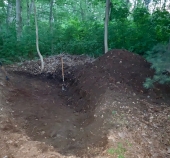




Examine your lifestyle, multiply it by 7.7 billion other ego-monkeys with similar desires and query whether that global impact is conscionable.
 1
1




A human being should be able to change a diaper, plan an invasion, butcher a hog, conn a ship, design a building, write a sonnet, balance accounts, build a wall, set a bone, comfort the dying, take orders, give orders, cooperate, act alone, solve equations, analyze a new problem, pitch manure, program a computer, cook a tasty meal, fight efficiently, die gallantly. Specialization is for insects.
-Robert A. Heinlein





Examine your lifestyle, multiply it by 7.7 billion other ego-monkeys with similar desires and query whether that global impact is conscionable.









Hans Albert Quistorff, LMT projects on permies Hans Massage Qberry Farm magnet therapy gmail hquistorff









many gardeners know that if you leave camphor woodchips outside for a few months, then it's fine for use as tree-mulch.
How Permies works: https://permies.com/wiki/34193/permies-works-links-threads
My projects on Skye: The tree field, Growing and landracing, perennial polycultures, "Don't dream it - be it! "

|
I child proofed my house but they still get in. Distract them with this tiny ad:
turnkey permaculture paradise for zero monies
https://permies.com/t/267198/turnkey-permaculture-paradise-monies
|

